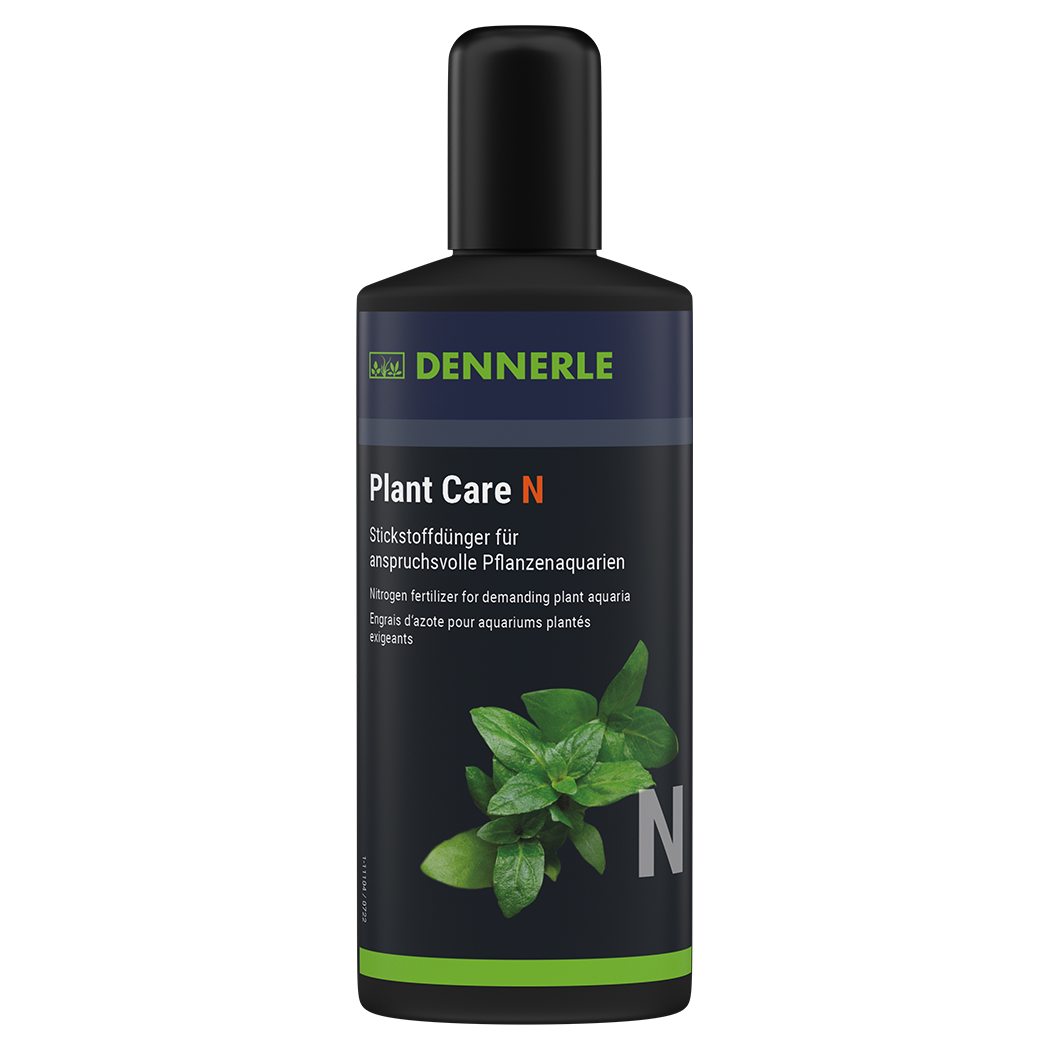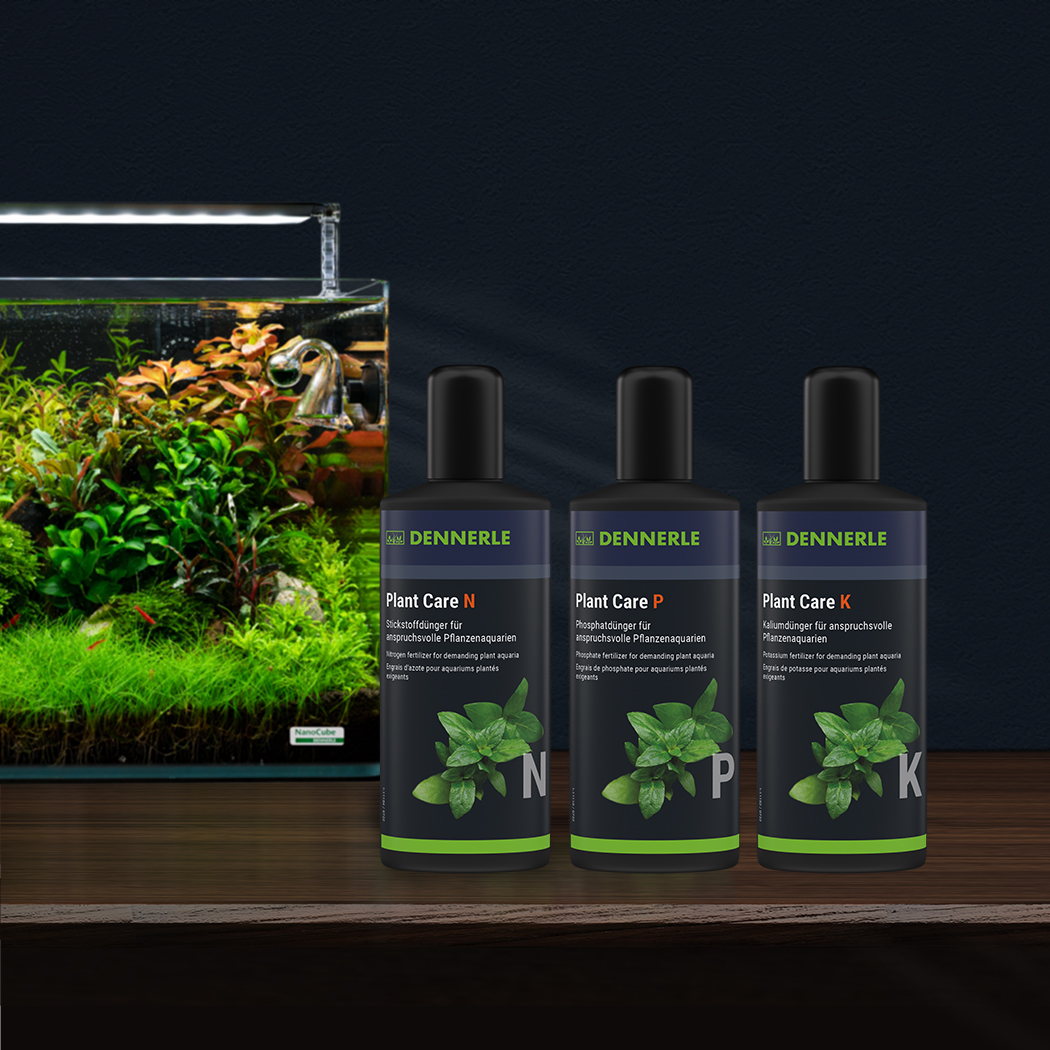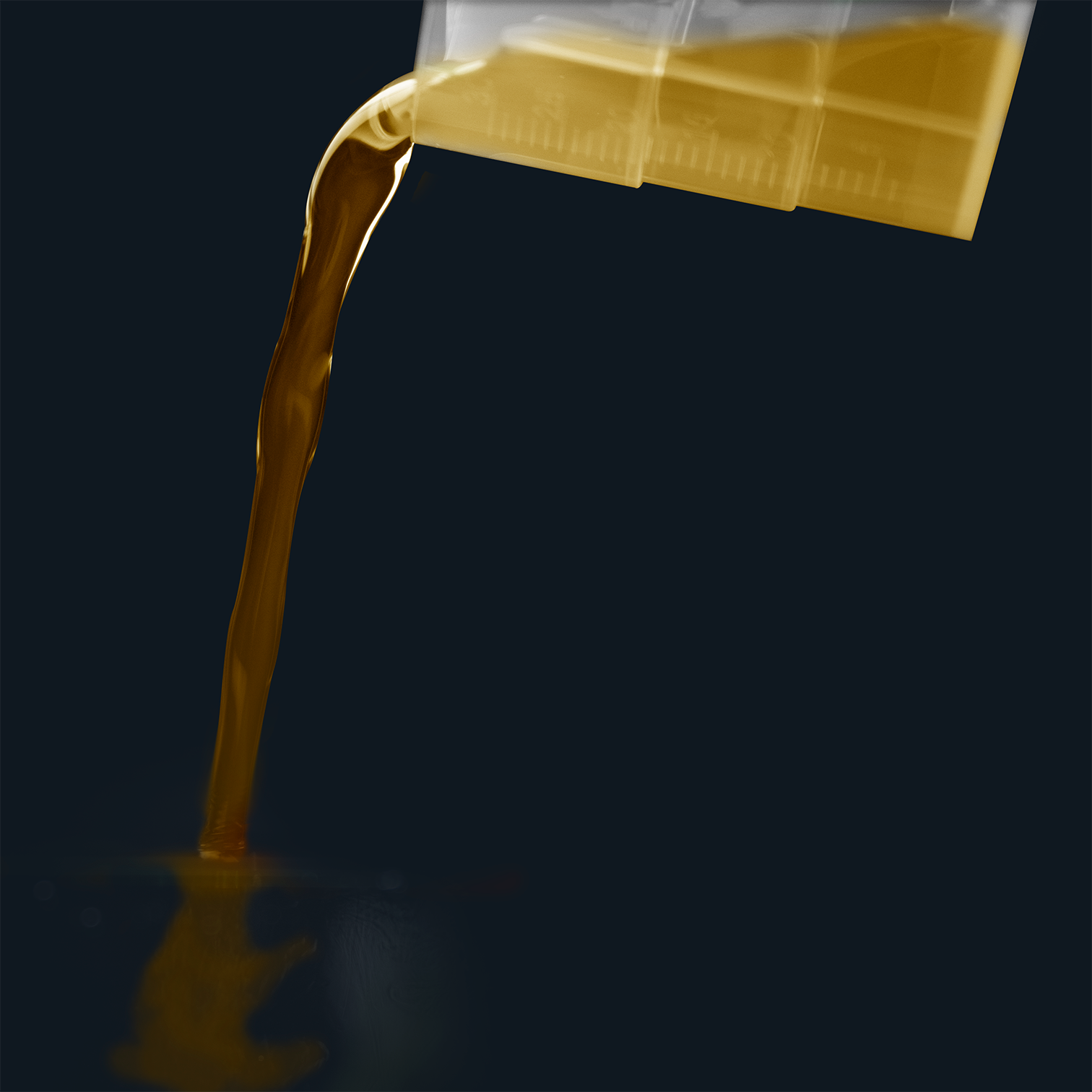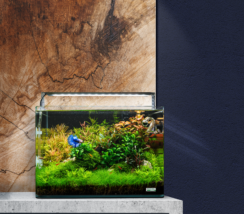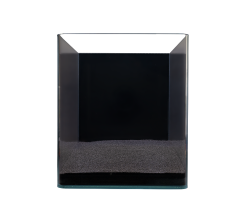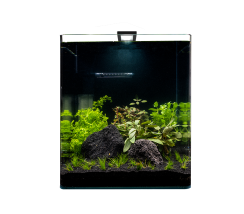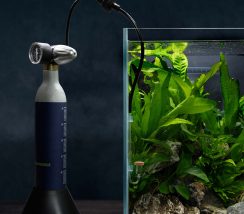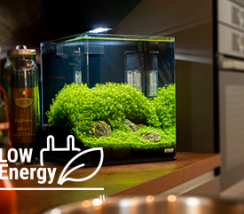Nitrogen macronutrient fertilizer for planted and demanding aquaria
Aquarium plants need around 20 different nutrients to grow healthily. Nitrogen is of particular importance in this respect.
Nitrogen belongs to the macronutrients and is needed in the largest quantity after carbon (as CO
2). Along with light and CO
2, it is the most important prerequisite for balanced, healthy plant growth.
What is nitrogen needed for in the aquarium?
Plants need nitrogen to build up numerous organic compounds, especially for the synthesis of vital amino acids. Amino acids are the building blocks of proteins and enzymes and have central functions in plant metabolism. Nitrogen is also needed for the formation of leaf green (chlorophyll). Plants can absorb nitrogen in various chemical forms, especially as ammonium, nitrate and urea. In the aquarium, nitrogen is primarily present as nitrate. Nitrate can be stored in plant cells and transported within the plant.
The addition of nitrogen is not necessary in normal, planted community aquariums, as it usually enters the aquarium in sufficient or often even excessive quantities via the feed.
In demanding planted aquaria, however, (e.g. aquascaping aquaria, Holland aquaria) the situation is different. They have an above-average nutrient requirement, especially for macronutrients. Such plant aquariums are characterized by
- dense planting (more than 70 – 80 % of the bottom surface)
- many fast growing species
- plenty of light (30 – 60 lumen/liter or more)
- CO2 fertilization
- 30 – 50 % partial water changes per week
- no or low fish stocking (but with shrimps)
Detect nitrate deficiency in the aquarium
Nitrogen deficiency can quickly occur in these types of aquariums. In this case, the entire plant turns yellow or yellow-green. A deficiency first shows up on the older leaves. They appear more yellow than the new ones, but usually do not die. In some plants, the leaves become glassy and almost transparent or turn slightly purple. Growth is significantly retarded. Inhibition of plant growth usually leads to algae problems.
Remedy nitrate deficiency in the aquarium
For demanding plant aquariums, it is therefore very useful to keep an eye on the nitrate level and supplement it if necessary.
Each aquarium has a specific nutrient consumption depending on plant quantity, plant species, animal stocking, feeding, water changes and growth conditions (light quantity, lighting time, CO
2 addition, filter technology, etc.). The required amount of fertilizer should therefore be determined individually for each aquarium.
If the aquarium has a need for all 3 macronutrients N, P and K, the use of Dennerle
Plant Care NPK is recommended. The nutrient ratios have been selected here so that all macronutrients are absorbed by the plants in equal proportions. Even with long-term, regular use, there can be no deficiencies or detrimental accumulation of individual nutrients. Especially with macronutrients, biological balance is of particular importance, i.e. the nutrients should always be present in a certain ratio to each other. Nutrient imbalances should be avoided, as they usually lead to algae problems.
Under special circumstances, the aquarium may have an above-average need for nitrogen. There are also tap waters that contain sufficient phosphate and potassium but too little nitrogen. In these cases, Dennerle
Plant Care N should be used to supply the plants specifically with nitrogen.
We recommend measuring the nitrate content weekly and dosing
Plant Care N accordingly.
Nitrate can be measured accurately and reliably using aquaristic tests. Simple dip tests also provide sufficient accuracy, e.g. the Dennerle
WaterTest 6in1.
If you have measured and fertilized regularly for several weeks, you can see at which level the measured values settle and which nitrate quantities the aquarium needs. Then you can add the determined weekly dose of
Plant Care N as standard and increase the measuring intervals to 2 to 4 weeks with a clear conscience.
A macronutrient fertilizer must always be used in combination with a micronutrient fertilizer (complete iron fertilizer). For a complete nutrient supply and best possible plant growth, we recommend the combination with
Plant Care Pro.
For magnificent plant growth and healthy fish and shrimp we recommend a partial water change of 25 % to 50 % per week. This removes waste and inhibitors and prevents nutrient imbalances.
Dosage
The fertilizer can be dosed precisely and accurately: 1 ml per 100 L adds 1 mg/L nitrate.
Plant Care N can be used as a weekly fertilizer or daily fertilizer.
The Dennerle Level System
With the level system you can find the right fertilizer quickly and easily.
Level 1 = For planted aquariums of type 1 with simple and few plants.
Level 2 = For heavily planted aquariums:
- of type 2 with many and demanding plants
- Type 3 from a size of 100 L with demanding plants
Add-Ons = optional care products to improve growth and health suitable for all aquarium types
Type 2 aquaria
With many and demanding plants and good growing conditions such as strong light and CO2, the needs and nutrients uptake of the plant also increase. A type of aquarium that is not only popular with aquascapers, but is also a good choice for new aquarists.
Especially for these aquariums we have developed our level-2-care. With high performance fertilizers, macronutrients and single nutrients you are prepared for any eventuality.

